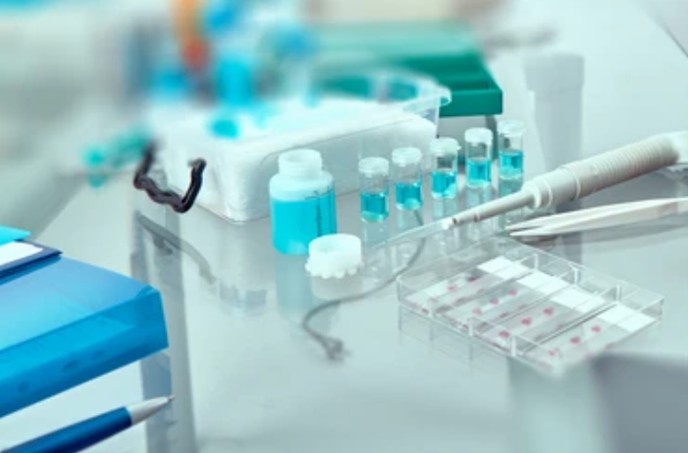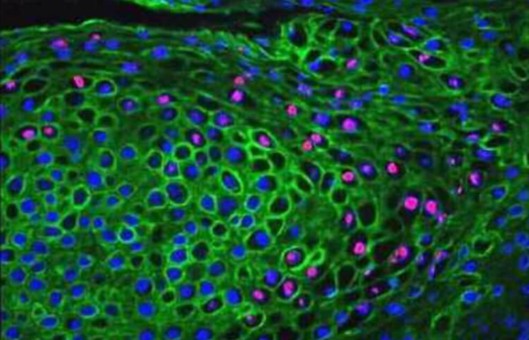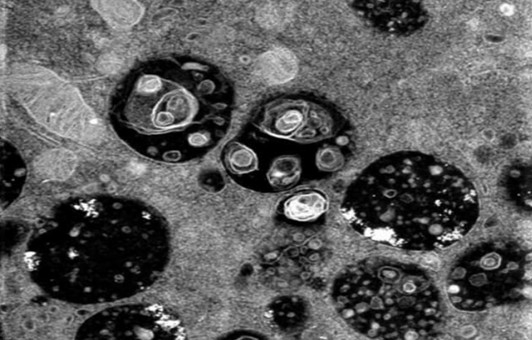Immunohistochemistry (IHC-P) Protocol
GUIDELINE
Immunohistochemistry (or IHC) is a method for demonstrating the presence and location of proteins in tissue sections. Though less sensitive quantitatively than immunoassays such as Western blotting or ELISA, it enables the observation of processes in the context of intact tissue. This is especially useful for assessing the progression and treatment of diseases such as cancer. In general, the information gained from IHC combined with microscopy literally provides a "big picture" that can help make sense of data obtained using other methods.
METHODS
- Tissue Fixation. Tissue should be fixed with formalin followed by an embedding in paraffin wax, and paraffin wax is used to dehydrate tissue.
- Tissue Sectioning. Tissue should be cut into 4 µm sections on clean, charged microscope slides and then heated in a tissue-drying oven for 45 minutes at 60°C.
- Deparaffinization. At room temperature, wash slides in 3 changes of xylene (5 minutes each).
- Rehydration. At room temperature, wash slides in 3 changes of 100% alcohol (3 minutes each), wash slides in 2 changes of 95% alcohol (3 minutes each), wash slides in 1 change of 80% alcohol (3 minutes each), gently rinse slides using distilled water for 5 minutes.

- Antigen Retrieval. Steam slides in 0.01 M sodium citrate buffer, pH 6.0 at 99-100°C for 20 minutes, remove slides from heat and let cool in buffer at room temp for 20 minutes, rinse in 1x TBS with Tween (TBST) at room temp for 1 minute.
- Immunostaining. Apply universal protein block at room temp for 20 minutes, drain the protein block from the slides; apply (diluted) primary antibody at room temp for 45 minutes, rinse slides in 1x TBST at room temp for 1 minute; apply a biotinylated secondary antibody at room temp for 30 minutes, rinse slides in 1x TBST at room temp for 1 minute; apply alkaline phosphatase streptavidin at room temp for 30 minutes, rinse slides in 1x TBST at room temp for 1 minute; apply alkaline phosphatase chromogen substrate at room temp for 30 minutes, wash slides with distilled water at room temp for 1 minute.
- Dehydration. Wash slides in 2 changes of 80% alcohol (1 minute each), in 2 changes of 95% alcohol (1 minute each), in 2 changes of 100% alcohol (1 minute each), in 3 changes of xylene (1 minute each).
NOTES
- When it is not possible to fix by perfusion, dissected tissue may be fixed by immersion in a 10% formalin solution for 4 to 8 hours at room temperature. It is commonly accepted that the volume of fixative should be 50 times greater than the size of the immersed tissue. Avoid fixing the tissue for greater than 24 hours since tissue antigens may either be masked or destroyed.
- The suggested cryostat temperature is between -15 and -23°C. The section will curl if the specimen is too cold. If it is too warm, it will stick to the knife.
- Excessive fixation may result in the masking of an epitope and strong non-specific background signal that can obscure specific labeling. If necessary, an antigen retrieval protocol can be performed at this time. However, many antigen retrieval techniques are too harsh for cryostat cut tissue sections.
- DAPI counterstain can obscure visualization of targets localized in cell nuclei.

